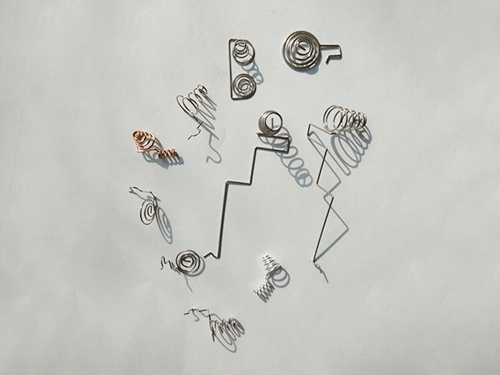4Industry Information

A spring is a part that can produce greater elastic deformation under load.
1. The type of spring The type of spring The type of spring The type of spring
According to different loads, springs can be divided into extension springs, compression springs, torsion springs and bending springs.
According to different shapes of springs, springs can be divided into coil springs, ring springs, disc springs, leaf springs and coil springs. Coil springs are made by winding spring wire, and they are the most widely used due to their simple manufacturing. In general machinery, the most commonly used cylindrical coil spring.
Second, the function of the spring The function of the spring The function of the spring The function of the spring
The basic types and functions of springs
(1) The movement of control mechanisms, such as control springs in brakes and clutches, valve springs in internal combustion engine cylinders, etc.
(2) Vibration damping and buffering, such as damping springs under cars and trains, and springs for various buffers.
(3) Store and output energy, such as clock springs, gun bolt springs, etc.
(4) Measure the size of the force, such as the spring in the dynamometer and spring scale.
A spring is one of the mechanical elements. It is made into an appropriate shape to make full use of the elasticity of the material and the ability to absorb energy. Therefore, as long as it is an elastic body, it can be used as a material. In the extreme, structures such as rails and bridges can also be said to be A kind of spring action. However, if the spring used as a general mechanical element uses a material with a small elastic range, it will exceed the elastic limit due to small external force or deformation. After the external force is removed, the deformation remains and the spring effect is reduced; therefore, the elastic material The first must require greater elasticity, that is, a high elastic limit, and metal springs are commonly used in practice.
The spring makes the most of the elasticity of the spring material. Of course, the higher the elasticity, the better. However, in actual use, the material also requires physical, chemical and mechanical properties and other conditions. The general considerations are:
1. Elastic limit: After a certain force is applied to the material to deform, the elastic limit is the stress relative to the maximum force without residual deformation when the force is eliminated. It is difficult to measure, but the material with high relative tensile strength has the elastic limit High, while the elastic limit can be changed by heat treatment or cold processing;
2. Elastic coefficient: The stress when a unit strain is applied to the spring material is called the elastic coefficient. This value is the matrix of the spring design. The elastic coefficient of the spring material mainly depends on its chemical composition, which is slightly affected by heat treatment and cold processing. There are changes, which will be greatly reduced when the temperature is high;
3. Fatigue strength: The fatigue strength has a certain relationship with the tensile strength of the material, but it changes due to the surface condition, decarburization, cold working, and heat treatment. These conditions change due to the manufacturing method of the material and the spring manufacturing method.
